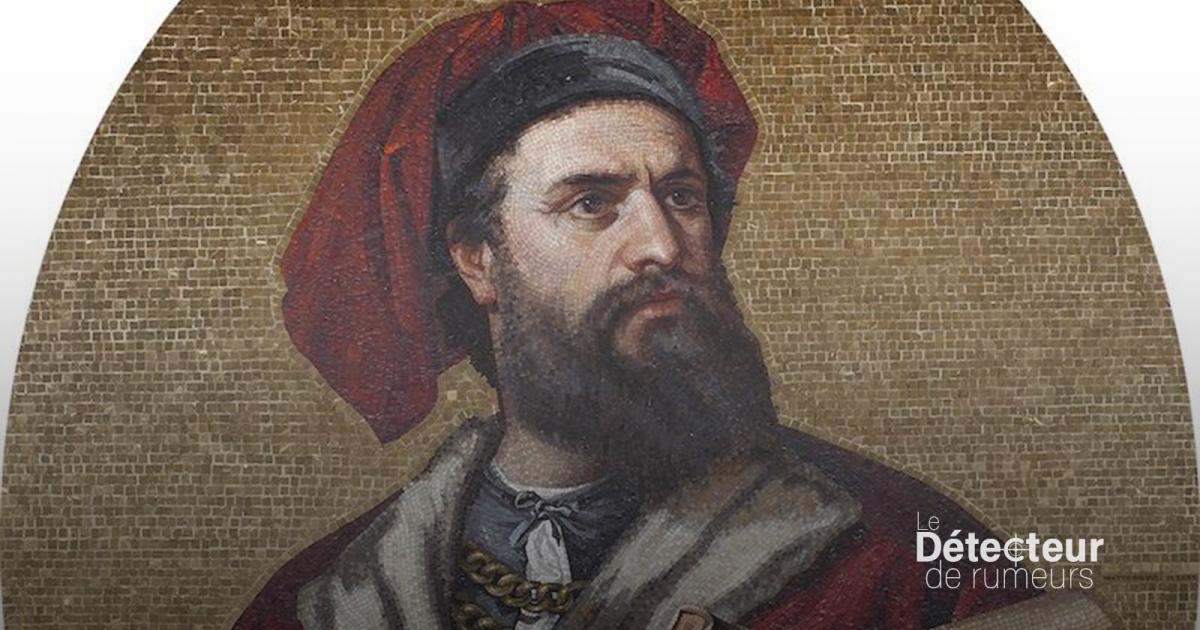This article is part of the section of the Rumor Detectorclick here for the other texts.
The origin of the rumor
We are not sure of the origin of this rumour, since Marco Polo, son of a Venetian merchant, says nothing of such a food that he would have brought home, in the story of his long journey in China between 1274 and 1291.
But it is possible that the legend that he brought Chinese noodles back to Italy was born from a Marketing strategy started in 1929 by the National Macaroni Manufacturers Association, to promote their made-in-USA pasta. We saw a member of Marco Polo’s crew, sometimes called Spaguetti, sometimes Macaroniaccording to the sources, meeting women making pasta yarn.
According to Pierre-Brice Lebrun, author of Small treatise on pasta, the advertisers would have been inspired by the story of Marco Polo who said he had seen the Chinese use wheat to make all kinds of pasta and not bread. Yet, there was nothing new since the Greeks, Romans and Arabs were already consuming pasta.
The first pasta
Historical texts and works of classical poets indeed indicate that pasta was on the menu of the ancient Greeks.
On the side of China, a noodle dish dating back over 4000 years was found in the ruins of Lajia. Lāmiàn (hand-pulled) type noodles were made from flour from two millets, which are similar to the wheat grains that go into Chinese noodles and European pasta today.
Before this discovery, the first written record of noodles in china dated back to a book written during the country’s Eastern Han dynasty, between 25 and 220 AD. A recipe for Chinese boiled dumplings also appears in a glossary written around the year 230.
So the Chinese invented pasta? It is not certain.
Pasta recipes were also discovered in a Mesopotamian culinary treatise dating from 1700 BC. AD, translated and published in 1995. We learn that the Mesopotamians ate “grated” pasta made with wheat flour and water, and crumbled in a boiling liquid. Even today there is a similar type of pasta in Italythe grated pasta.
Lasagna, they were known in the Greco-Roman world. The Greeks, the Romans, but also populations of the Middle East, ate a dish called “laganon”, a strip of flat dough cut into irregular strips, used in soups with leeks and chickpeas, according to Giorgio Franchetti, an ancient Roman scholar who wrote a book of ancient Roman recipes. A culinary treatise (Of re coquinaria) published in IVe century, but attributed to Apicus (around 25 BC – around 37 AD), described for his part laganapasta stuffed with meat.
Two stories?
Some argue that noodles and pasta would be two separate foodsreflecting two cultures and culinary identities, and which would therefore have developed in parallel: the noodles found in Lajia for Asia, and the Mesopotamian or Roman pasta at the other end of the continent.
For the defenders of this idea, noodles and pasta are distinguished by the type of cereal that goes into their manufacture, their method of preparation and cooking, as well as their fillings, which are specific to each civilization. Moreover, there is no direct link between Asian and Italian ways of mixing cereals with water to create noodles or pasta, points out the food historian and member of the Italian Academy chef, Anna Maria Pellegrino.
Cut and dried pasta
The story surrounding the invention of the first cut and dried noodles is equally murky. Some say they are due to the Chinese, others to the Italians and others to the Arabs. To withstand long journeys in the desert, where water was scarce, the Arabs were drying their pasta to which they gave a cylindrical and hollow shape, close to macaroni, in order to keep longer. Spaghetti, whose name comes from the Arabic language and means thread or string, would be a legacy of this influence.
In a book dated 1154, an Arab geographer by the name of Al-Idrin evokes the caravans which fed on “rista”, a dish made up of dried pasta cooked in a meat broth, a recipe that we still found today in the Middle East.
Dried pasta is said to have been introduced to Italy by the Arabs in the IXe century, when they conquered Sicily. They then spread across the country, to neighboring countries, and then to North America where the first documented pasta factory was established in Brooklyn in 1848.
Verdict
Marco Polo may have brought noodles made with rice from China, but it is clearly established by historians that he was not responsible for introducing pasta to Italy or Europe.
Photo: Mosaic of Marco Polo, Palazzo Doria-Tursi, Genoa
–


